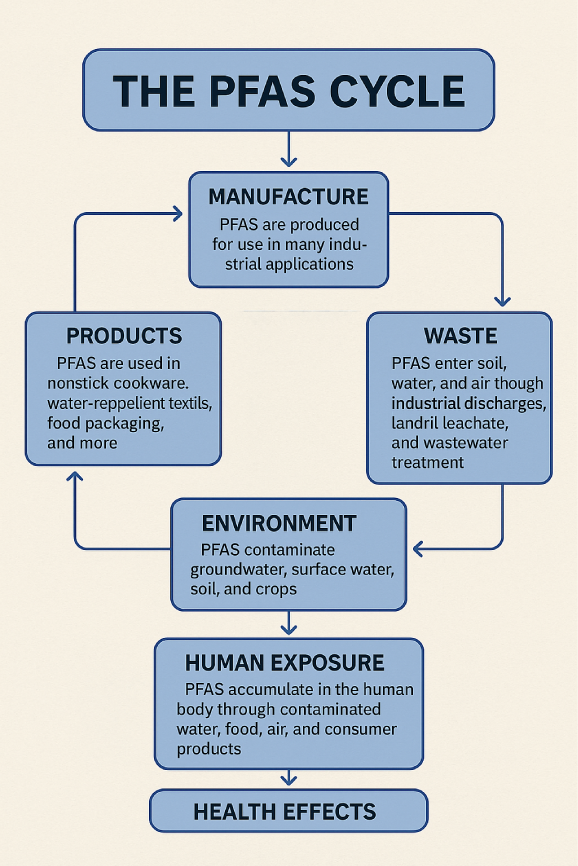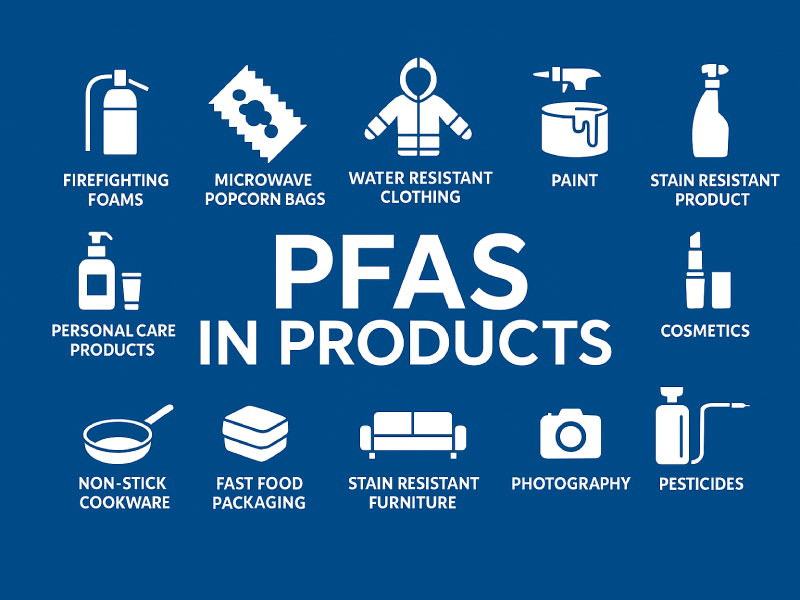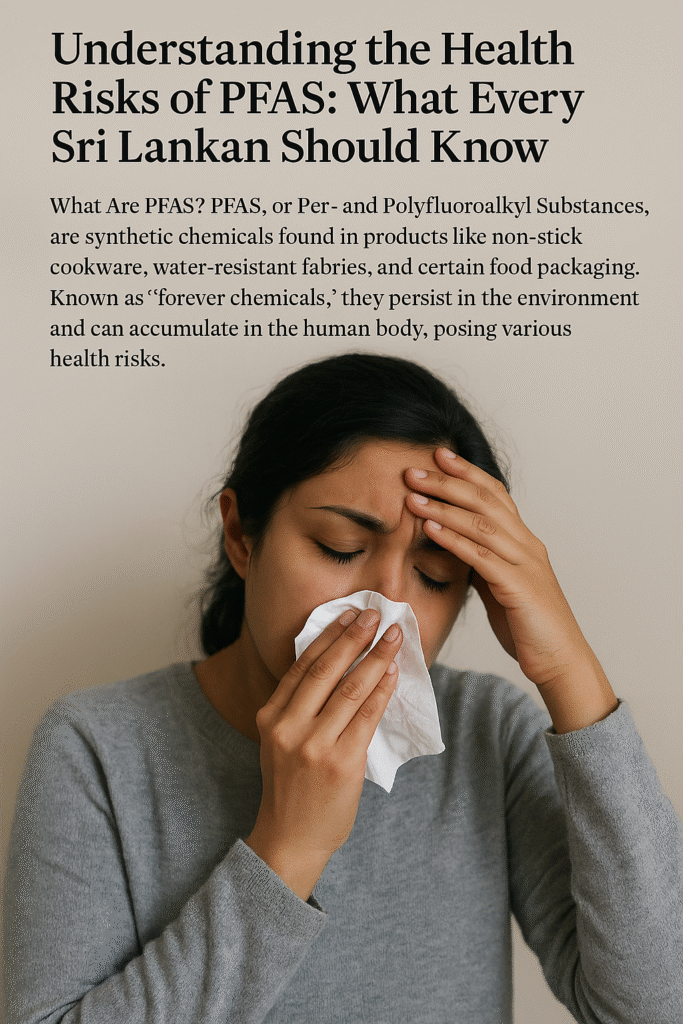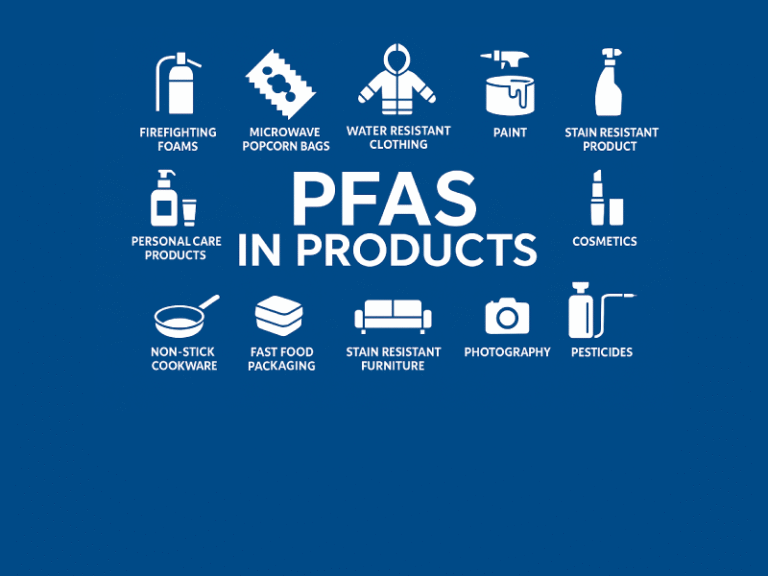What Are PFAS?
Imagine if someone told you there were invisible chemicals in your pizza box, your rain jacket, and even your lip gloss that never go away, not from your body, not from the environment, never.
That’s PFAS, and they’re everywhere.
PFAS, or Per- and Polyfluoroalkyl Substances, are synthetic chemicals found in products like non-stick cookware, water-resistant fabrics, and certain food packaging. Known as “forever chemicals,” they persist in the environment and can accumulate in the human body, posing various health risks.
Think of PFAS like digital footprints, except instead of following you online, they follow you through your bloodstream. Every time you eat from a greasy fast-food wrapper or wear that “waterproof” jacket, these chemicals slip into your system and set up permanent residence.
If your body were a house, PFAS would be the houseguests who never leave and slowly rearrange your furniture without asking.
Why Should You Be Concerned?
PFAS exposure has been linked to numerous health issues, making it crucial for Sri Lankans to understand these risks and how to minimize exposure.
Here’s the scary part
These chemicals are master manipulators. They make your frying pan non-stick and your mascara waterproof, so they seem helpful.
But while they’re making your life convenient, they’re quietly messing with your hormones, weakening your immune system, and increasing your cancer risk.
It’s like having a friend who brings you snacks but steals money from your wallet when you’re not looking.

Key Health Risks Associated with PFAS
You won’t feel sick immediately. PFAS play the long game, accumulating for years until one day your body starts breaking down in ways doctors can’t easily explain.
If ignoring climate change seems foolish because the consequences hit later, then ignoring PFAS is the same gamble with your own body.
The convenience isn’t worth becoming a walking chemistry experiment.
Cancer: Linked to kidney and testicular cancers.
Liver Damage: Can cause liver conditions and enzyme changes.
Immune System Impact: Weakens immune responses, making vaccines less effective.
Hormonal Disruption: Affects thyroid and reproductive health.
Developmental Concerns: Impacts prenatal and early childhood development.
Cholesterol and Heart Health: Linked to higher cholesterol and hypertension.

Is PFAS Labeling Necessary?
Given the health risks, it is crucial for consumers to know if products contain PFAS. Advocating for mandatory labeling can help consumers make informed choices and reduce their exposure. Transparency in product ingredients can empower individuals to choose safer alternatives and drive demand for PFAS-free products.
These compounds have steadily infiltrated aquatic ecosystems, particularly through industrial discharges and atmospheric fallout. Take a look at the following study on Emerging PFAS Contamination. (Check it out here)
🔍 What the Study Reveals
A systematic review of 25 peer-reviewed studies (2018–2023) shows PFAS contamination is no longer isolated, it’s widespread in rivers, lakes, and aquatic life globally.
Finnish rivers and fish are now confirmed hotspots, with PFAS like PFOS detected at levels that pose significant ecological and dietary health risks.
The PFAS shift from long-chain to short-chain variants, believed to be “safer”, has actually made detection and treatment harder, further complicating cleanup efforts.
⚠️ Why You Should Be Concerned
Consuming PFAS-contaminated fish can exceed safe intake thresholds, affecting your liver, hormones, and immune system.
PFAS doesn’t just linger, it climbs up the food chain, threatening biodiversity and human food sources alike.
Current Water Quality in Sri Lanka
Water quality in Sri Lanka varies by region, but there have been concerns about PFAS contamination in certain areas, especially near industrial zones.
Using water filters that can remove PFAS is a practical step individuals can take. Government initiatives and community awareness are also essential to ensure clean and safe drinking water for all.
Whats a good water purification product to get rid of PFAS?
To effectively remove PFAS (like PFOA, PFOS, GenX), you’ll want a high-performance water filtration system that uses activated carbon, reverse osmosis (RO), or ion exchange.
Here are some PFAS-targeted water purification options available (or easily accessible) in Sri Lanka.
Haycarb PFAS Removal Activated Carbon
VonWater V1-600N All-in-One Tankless RO (Imported Under the Sink Option)
Waterdrop G2P600 Reverse Osmosis System (Imported Under the Sink Option)
Steps You Can Take to Reduce Exposure
Filter Your Water: Use filters designed to remove PFAS.
Choose PFAS-Free Products: Look for labeling or information about PFAS content.
Eat Fresh Foods: Reduce intake of packaged foods that may have PFAS in their packaging.
Stay Informed: Follow updates on water quality and PFAS regulations.
Conclusion
Raising awareness about PFAS and advocating for labeling can help Sri Lankans make safer choices. Combined with measures to improve water quality, these steps can significantly reduce health risks and promote a healthier future.




